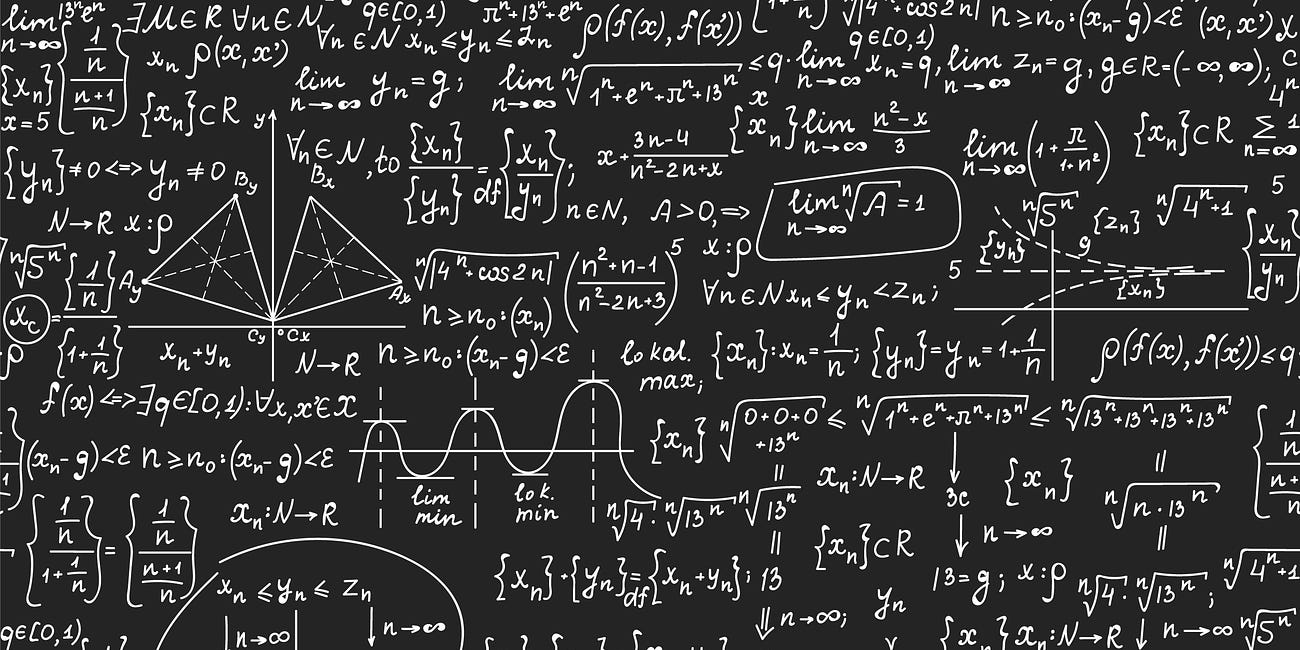w, The Missing Constant, Informs on π
There are a few things to share here, most are results that can be readily confirmed. The exact identify 𝜋=5*arccos*((w(1+sqrt(5))/ln(10)) is one of them. If you know a mathematician, ping them.
Seriously. Mathematicians will get a kick out of w, and today’s article, especially.
So, we have made a few observations about w = ln(10)/4. (See RELATED, below).
I have noticed more recently that
π = 5cos^(−1)*((w(1+sqrt(5))/ln(10))
(^ means “raised to the power of…” you can check in Excel with
=5*ACOS((A1*(1 + SQRT(5)))/LN(10)) where A1 = LN(10)/4
This is true because
w = ln(10)*COS(PI/5)/(1+sqrt(5)) (=ln(10)/4, among others…)
Also, true, but here is the Excel function to help you keep me honest =
=LN(10)*COS(PI()/5)/(1+SQRT(5))
In case you did not know, there are very few equations which provide the exact value of π. Send your congratulations in the form of a paid subscription :)
In the equation
π= 5cos^(−1)*((w(1+sqrt(5))/ln(10)),
the notation cos^−1 represents the inverse cosine function, also known as the arccosine function. It is used to find the angle whose cosine is the given value.
The equation
𝜋=5*arccos*((w(1+sqrt(5))/ln(10))
is another way to represent this exact identity.
If you’re reading this far, congratulations to YOU, because this is no small feat, and if you’re reading this in May or June 2024, you’re one of the first to read about this relationship.
It can be interpreted as follows:
You can read this as “π is equal to 5 times the angle (in radians) whose inverse cosine is a function of w, specifically:
(w(1+sqrt(5))/ln(10)”
When we work this out, we get cos^(−1)(0.80902). Solving for the angle in radians, we get θ≈0.62832 radians (which, elegantly, also equals π/5).
Radians are defined such that one radian is the angle subtended at the center of a circle by an arc that is equal in length to the radius.
A full circle in radians is 2π radians. We have, as our angle, 0.62832 radians. There happen to be, elegantly, ten such angles with 0.62832 radians in a circle.
This angle is significant because it shows how the constant 𝑤, through a trigonometric relationship, ties into the geometry of circles. Specifically, this angle π/5 is one-tenth of a full circle, reinforcing the idea that 𝑤 serves as a bridge between different mathematical domains, including logarithmic, trigonometric, and geometric domains.
This is why w is proposed as a Transcendental Bridging Scalar, or a Universal Modulators. The discovery of 𝑤 and its relationships with a constant as fundamental as 𝜋 is an exciting development.
We can expect to find other avenues of inquiry about w.
And we can expect to find many other TBSs/UMs. There are, in fact, an infinity of them, but that’s a topic for another article about the meaning of constants, especially numbers that seem to act like functions.
Next week, we’ll recap what we know about w, the missing constant, and perhaps explore a few additional new things.
RELATED







This is cute, but it is the inverse cosine function that does all the heavy lifting in bringing out π.
w can be understood in the context of a chalk board loadd with equations. In third grade I had a math teacher that wore the same purple dress every day and the back got covered with yellow chalk. But I digress.. If you can understand that w= 24 +10 =34, the magic number. w in so many equations=34 so the equation should read w =7+3+24 =in a radian degree onversion= 34 felons.